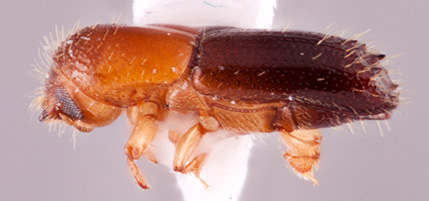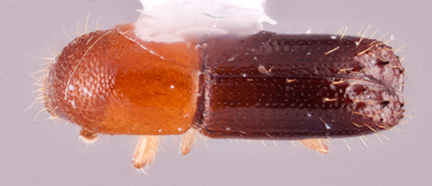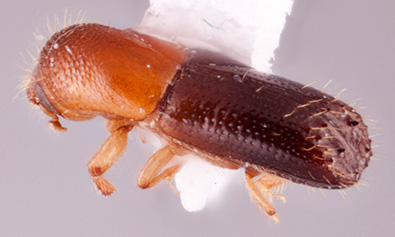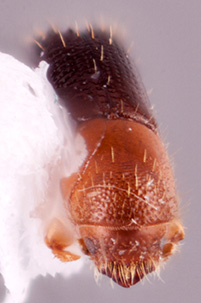Debus pumilus
|
Debus pumilus lateral; R.K. Osborn |
|
Debus pumilus dorsal; R.K. Osborn |
|
Debus pumilus declivity; R.K. Osborn |
|
Debus pumilus frontal; R.K. Osborn |
Taxonomic history
Xyleborus pumilus Eggers, 1923: 209.
Debus pumilus (Eggers): Hulcr and Cognato, 2010a: 15.
Synonyms
Xyleborus cylindricus Eggers, 1927b: 94. Hulcr and Cognato 2010a: 15.
Xyleborus neocylindricus Schedl, 1942a: 196. Beaver 2011: 284.
Ips kelantanensis Browne, 1955: 345. Beaver 1995a: 199 (as synonym of X. cylindricus)
Xyleborus ipidia Schedl, 1972a: Hulcr and Cognato 2010a: 15.
Xyleborus planodeclivis Browne, 1974: 70. Schedl 1980: 122 (as synonym of Xyleborus ipidia).
Diagnosis
2.5−3.2 mm long (mean = 2.78 mm; n = 5); 3.25−3.57 times as long as wide. This species is distinguished by the elytralelytral:
pertaining to the elytra
apexapex:
point or edge furthest from the body; opposite of base
 emarginate, never explanateexplanate:
emarginate, never explanateexplanate:
spread out and flattened; applied to a margin
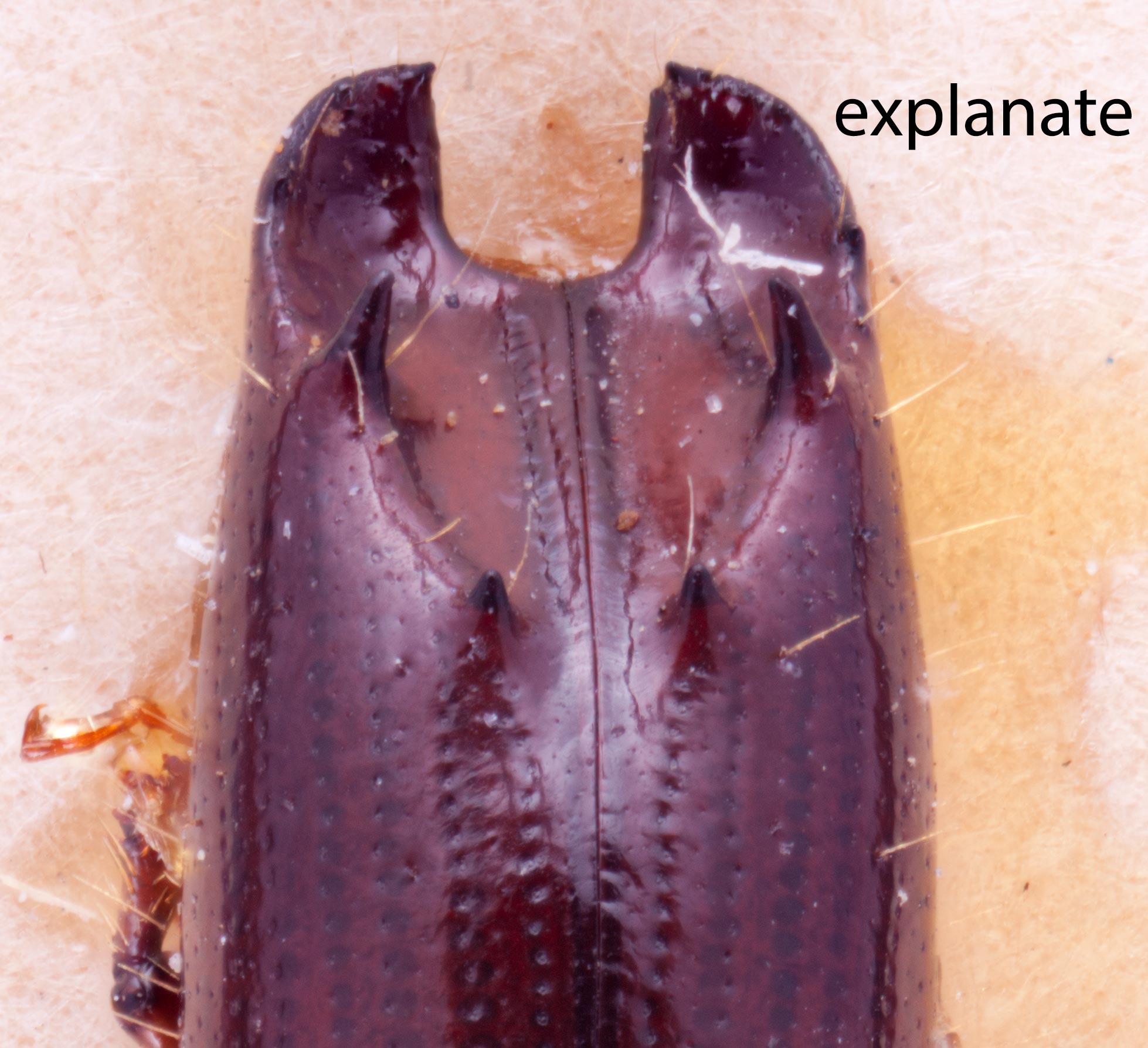 , appearing flat and broad; declivitaldeclivital:
, appearing flat and broad; declivitaldeclivital:
pertaining to the elytral declivity
sulcus shallow; and small size.
May be confused with
Debus adusticollis and D. detritus
Distribution
Australia, China (Xizang, Yunnan), Fiji, India (Andaman Is, Arunachal Pradesh, Assam, West Bengal), Indonesia (Java, Maluku, Sumatra), Laos, East & West Malaysia, Myanmar, Papua New Guinea, Philippines, Solomon Is., Sri Lanka, Thailand, Vietnam
Host plants
Polyphagous. Browne (1961b) and Hulcr and Cognato (2013) suggest a strong preference for Moraceae, but the species has also been recorded from many other families.
DNA data
Sequences available for COI and CAD.
COI: HM064136.1; MN619901; MN619902
CAD: HM064299.1; MN620184

